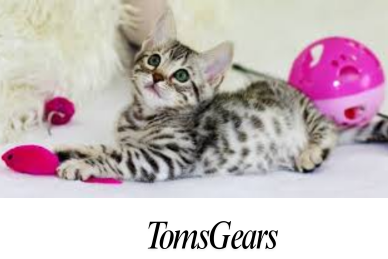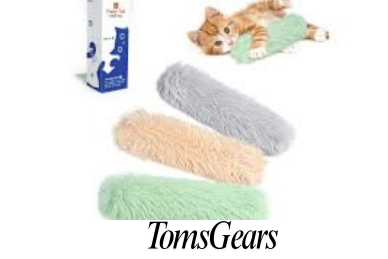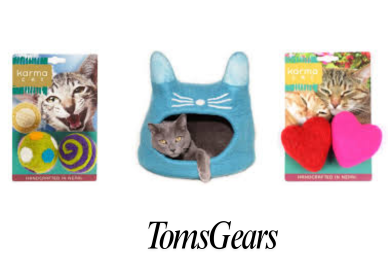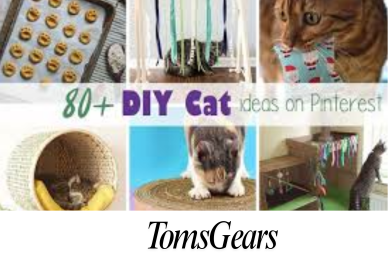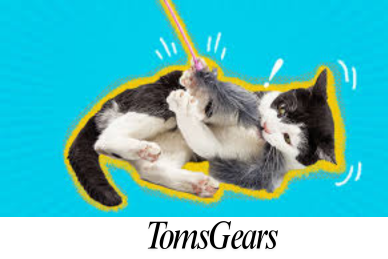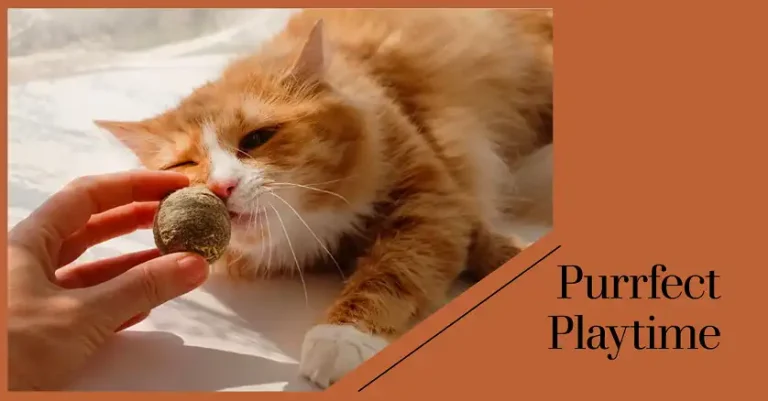Are Cat Spring Toys Safe?
Cat spring toys can be safe and entertaining for cats when selected carefully and used under supervision. Their bouncy and unpredictable movements keep cats engaged, promoting both physical exercise and mental stimulation. However, low-quality spring toys can pose choking hazards or injury risks if parts break off or become lodged in the cat’s mouth. Understanding the potential dangers and choosing well-constructed options will ensure safe playtime for your feline companion.
Why Do Cats Enjoy Spring Toys?
Spring toys cater to a cat’s natural instincts to chase, pounce, and catch moving objects, similar to how they would hunt small prey in the wild. These toys bounce erratically when swatted, mimicking the movements of insects or small animals, which triggers a cat’s hunting drive. Because of their lightweight and springy nature, even a gentle paw tap can send the toy spiraling in unpredictable directions, making it irresistible for cats to chase.
Additionally, using spring toys encourages cats to jump, leap, and stretch—activities that are vital for maintaining a healthy weight and muscle tone. A typical cat can leap up to six times its body length in a single jump, so spring toys can provide the perfect motivation for this kind of exercise.
What Are the Safety Concerns with Cat Spring Toys?
While many cats find spring toys engaging, they are not without risks. The primary safety concerns stem from the material, design, and durability of these toys. Here’s what to watch out for:
- Choking Hazards: Thin plastic or rubber can snap or break into smaller pieces, which your cat may accidentally swallow.
- Sharp Edges: Some spring toys, especially poorly manufactured ones, may have sharp or jagged edges that can harm your cat’s mouth or paws.
- Entanglement Risk: Long, stretchy springs can wrap around a cat’s neck, tail, or limbs, posing a risk of entanglement.
- Toxic Materials: Low-cost or cheaply made spring toys might contain harmful chemicals, such as phthalates or BPA, which can be dangerous if chewed or ingested.
To mitigate these risks, opt for toys made from non-toxic, durable materials and always inspect them before use.
How Can You Choose Safe Spring Toys for Your Cat?
When selecting spring toys, prioritize well-reviewed, high-quality options. Look for toys that are made from soft plastic, durable rubber, or fabric-covered springs to minimize the chances of breakage. Avoid spring toys that have metal coils or sharp points, as these can injure your cat during play.
Consider choosing spring toys that are specifically designed for pets, rather than repurposing items like Slinkies or other non-pet-safe objects. Properly designed cat spring toys should have smooth edges, flexibility, and resilience, ensuring they retain their shape even after vigorous play.
| Toy Material | Safety Features | Potential Risks |
| Soft Plastic Springs | Non-toxic, flexible, smooth edges | Low breakage risk |
| Rubber-Coated Springs | Reinforced material, resistant to chewing | May become a choking hazard if torn |
| Fabric-Wrapped Springs | Soft exterior, no sharp edges | Can fray or unravel over time |
Can Spring Toys Be Left Out for Cats to Play Alone?
It’s generally best to supervise your cat when they are playing with spring toys. While some toys are marketed as safe for independent play, even high-quality spring toys can pose a risk if your cat chews through them or becomes entangled. If you do leave spring toys out, choose those that are shorter, sturdier, and less prone to snapping.
If you notice your cat aggressively chewing on the springs or attempting to tear them apart, it’s a sign that the toy should be removed. Opt for more robust alternatives like rubber balls or plush kickers for unsupervised play.
What Are Some Alternatives to Cat Spring Toys?
If spring toys seem too risky or if your cat tends to destroy them, there are plenty of safer alternatives that still offer a similar level of fun and exercise. Consider these options:
- Crinkle Balls: Lightweight and safe, crinkle balls mimic the sounds of small prey and encourage chasing.
- Interactive Wand Toys: Feathered or string-based toys can engage your cat without the risk of small pieces breaking off.
- Plush Mice: Soft and chewable, plush mice are safer for vigorous chewers.
These toys not only keep your cat entertained but also reduce the risk of ingestion or choking associated with spring toys.
How Often Should Spring Toys Be Replaced?
The lifespan of a spring toy depends largely on your cat’s play style and the quality of the toy. If your cat is a rough player, the toy may show signs of wear within a few weeks. Regularly inspect spring toys for any signs of damage, such as frayed edges, bent springs, or missing parts. It’s a good practice to replace these toys as soon as they start to show wear, as small cracks or tears can quickly become dangerous.
On average, replacing spring toys every two to three months is recommended, or sooner if you see visible damage.
What Should You Do If Your Cat Swallows Part of a Spring Toy?
If you suspect that your cat has swallowed part of a spring toy, monitor them closely for any signs of distress, such as vomiting, lethargy, loss of appetite, or changes in bowel movements. Even small pieces can cause blockages or irritation in the digestive tract.
In the event your cat exhibits any of these symptoms, contact your veterinarian immediately. Knowing exactly what part of the toy your cat swallowed can help the vet determine the best course of action. For small, non-toxic pieces, your vet may recommend a wait-and-see approach, but larger or sharper pieces might require an x-ray or surgical removal.
How Can You Make Spring Toys Safer for Your Cat?
If your cat loves spring toys and you want to continue using them, consider taking these additional safety measures:
- Choose Shorter Springs: Opt for shorter springs (under 3 inches) to reduce the risk of choking or entanglement.
- Reinforce Weak Points: Some owners wrap the springs in fabric or tape to cover any sharp edges.
- Supervise Play: Only allow your cat to play with spring toys when you’re present to step in if a problem arises.
- Discard Damaged Toys: If you see any sign of damage—no matter how small—replace the toy immediately.
Verdict: Are Cat Spring Toys Safe?
Cat spring toys can be safe when you choose high-quality versions and monitor playtime closely. The key is selecting toys made from non-toxic materials and inspecting them regularly for signs of wear. While the bouncy nature of spring toys can provide hours of fun and exercise, being vigilant about your cat’s safety will ensure that playtime is both enjoyable and hazard-free.
Frequently Asked Questions
1. Can cats chew on spring toys safely?
No, chewing on spring toys can lead to breakage and choking hazards. Opt for durable rubber-coated versions if your cat tends to chew.
2. Are there specific brands of spring toys that are safer?
Yes, some brands prioritize safety by using thicker, non-toxic plastic and reinforced construction. Check reviews and product descriptions carefully.
3. What should I do if my cat gets tangled in a spring toy?
If your cat becomes tangled, gently remove the toy and check for any injuries. Avoid using long or overly flexible springs in the future.
4. Can I make DIY spring toys for my cat?
DIY spring toys are not recommended unless you’re confident in using safe materials. Opt for store-bought options that have been tested for safety instead.

